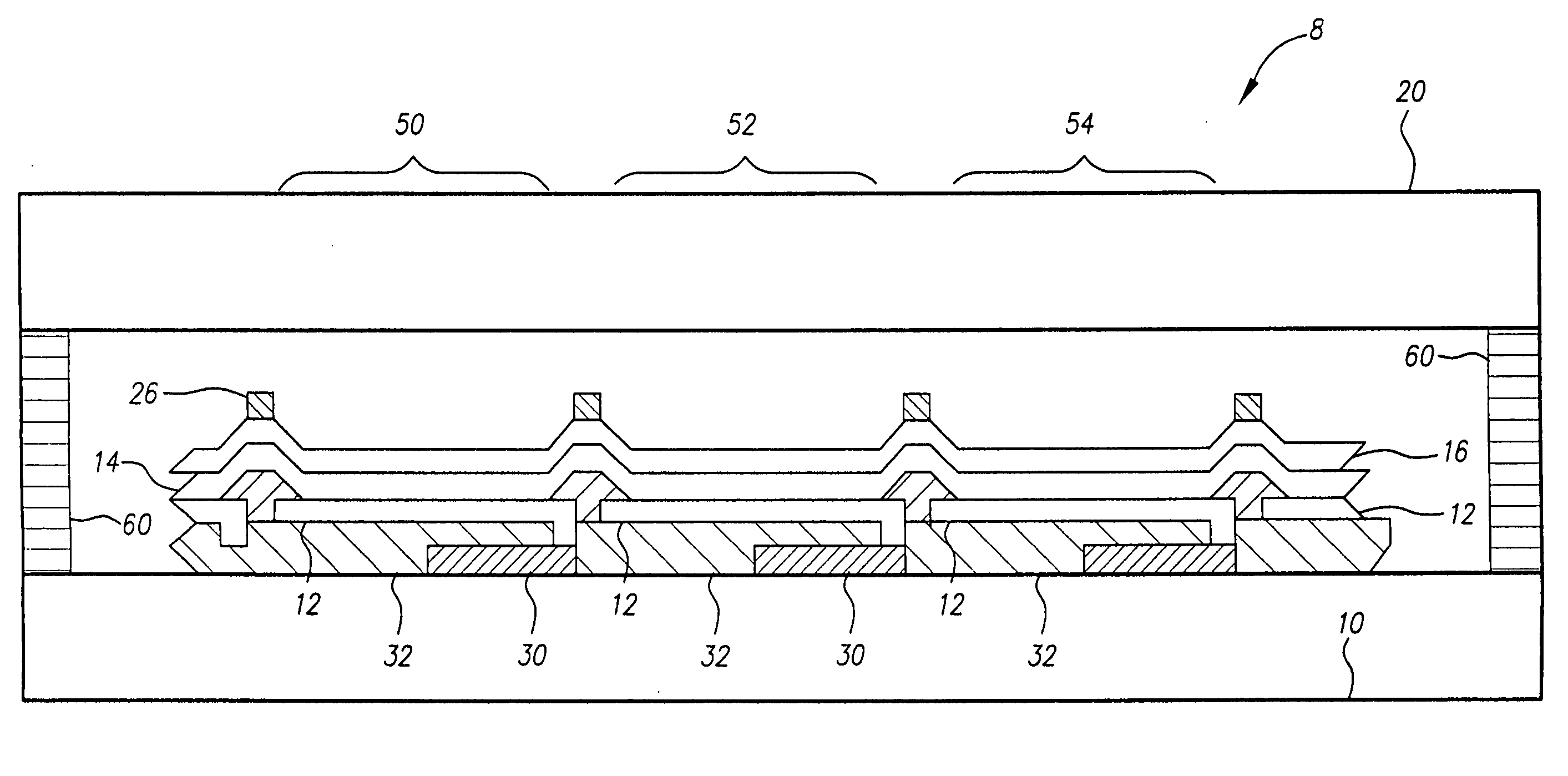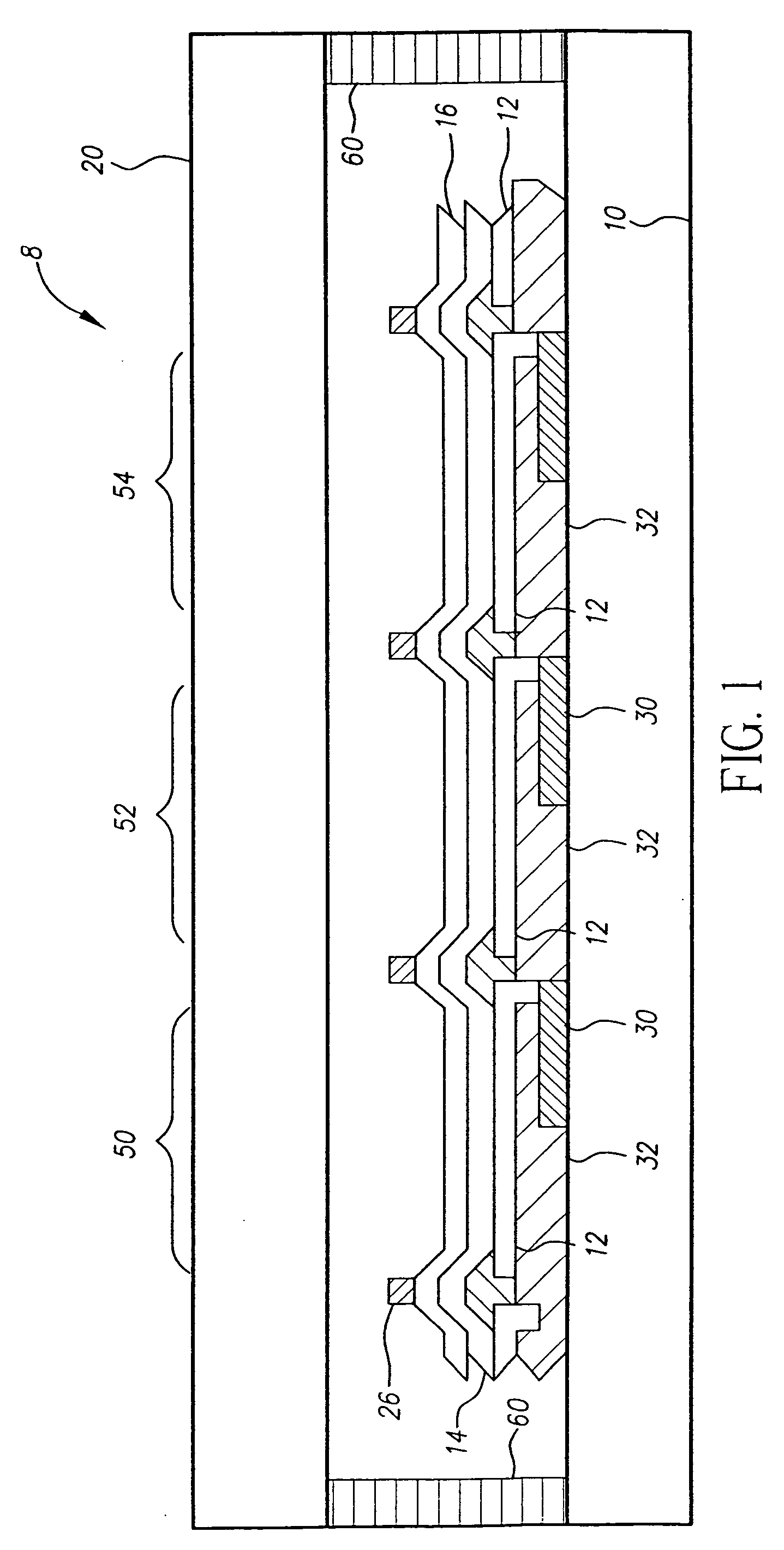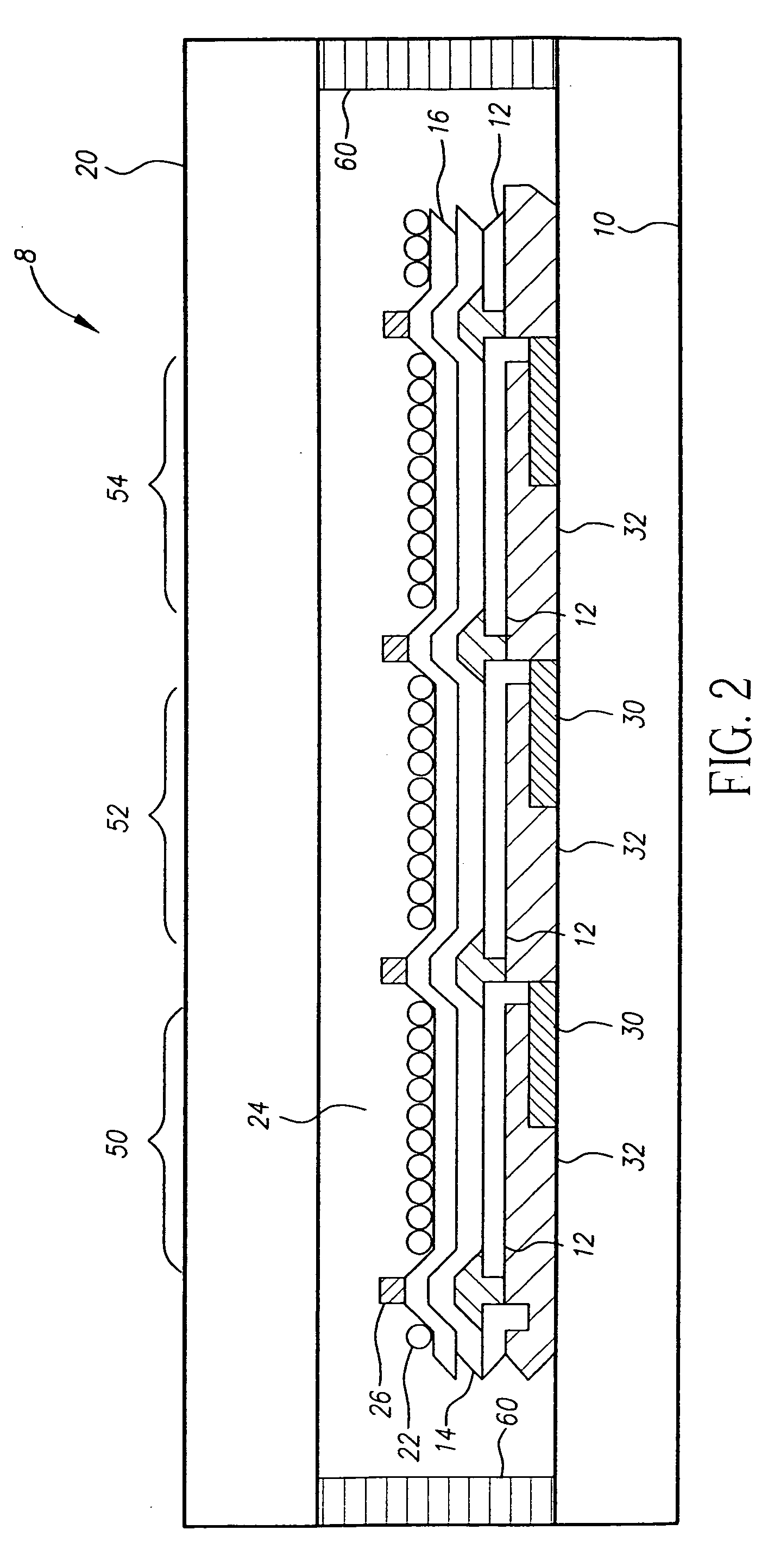OLED with protective electrode
- Summary
- Abstract
- Description
- Claims
- Application Information
AI Technical Summary
Benefits of technology
Problems solved by technology
Method used
Image
Examples
Embodiment Construction
[0033]Referring to FIG. 1, an OLED device 8 according to one embodiment of the present invention comprises a substrate 10, a first electrode 12, a conductive protective electrode 16 comprising a transparent conductive oxide wherein the conductive protective electrode 16 is a hermetic layer having a thickness less than 100 nm, and one or more organic layers 14 formed between the first electrode 12 and the conductive protective electrode 16, at least one organic layer being a light-emitting layer; and a patterned auxiliary electrode 26 in electrical contact with the conductive protective electrode 16.
[0034]In a top-emitter embodiment of the present invention, the conductive protective electrode 16 is a transparent top electrode and the first electrode 12 is a bottom electrode. The bottom electrode may be reflective. It is preferred that the conductive protective electrode 16 have a refractive optical index equal to or greater than the refractive optical index of the one or more organi...
PUM
 Login to View More
Login to View More Abstract
Description
Claims
Application Information
 Login to View More
Login to View More - R&D
- Intellectual Property
- Life Sciences
- Materials
- Tech Scout
- Unparalleled Data Quality
- Higher Quality Content
- 60% Fewer Hallucinations
Browse by: Latest US Patents, China's latest patents, Technical Efficacy Thesaurus, Application Domain, Technology Topic, Popular Technical Reports.
© 2025 PatSnap. All rights reserved.Legal|Privacy policy|Modern Slavery Act Transparency Statement|Sitemap|About US| Contact US: help@patsnap.com



